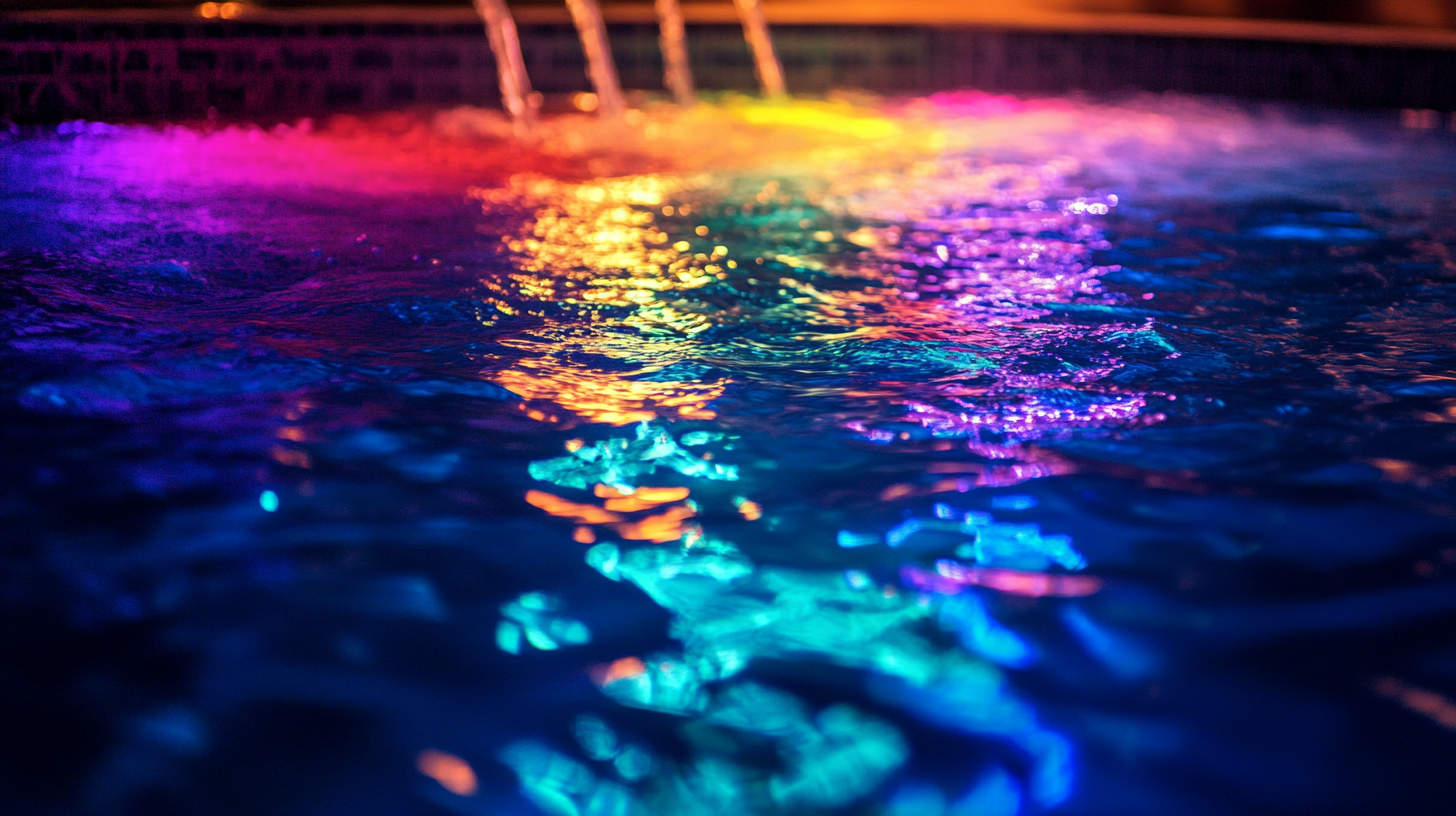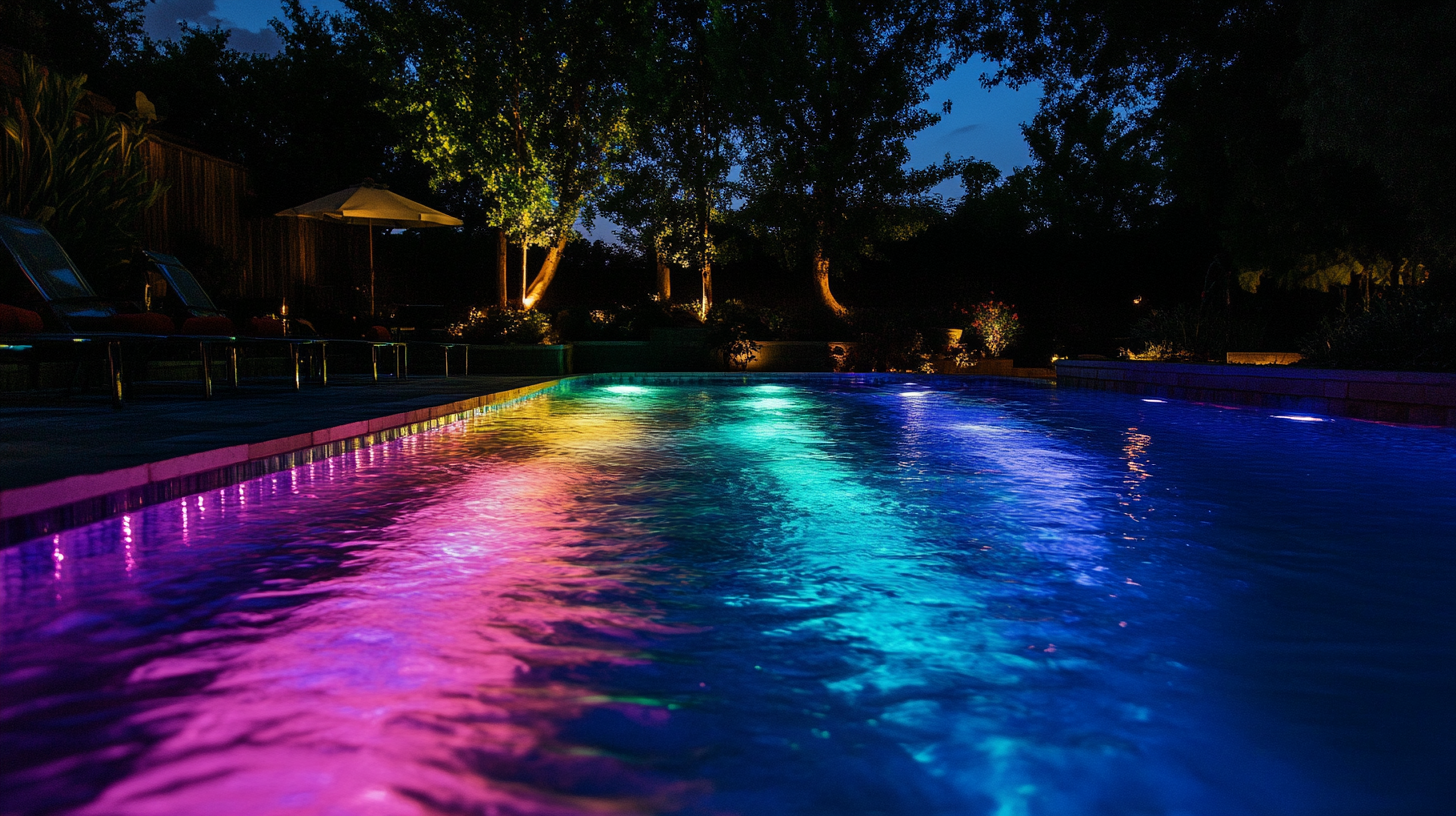What to look for in high-quality underwater boat lights
When it comes to choosing the right underwater lights for your boat, one of the foremost considerations is their illumination intensity. Imagine cruising through the open waters with a brilliant halo surrounding your vessel, transforming dark depths into a mesmerizing aquatic stage. High-quality underwater lights are engineered to provide optimal brightness, enhancing visibility and ensuring your presence is as enchanting as it is safe.
The lumens output of underwater lights is indicative of their illumination intensity, and it’s a critical factor to consider in the selection process. More lumens mean brighter light, providing clarity in murky water conditions and illuminating a larger area. This is particularly beneficial for night fishing expeditions or for creating an inviting ambiance during a nautical evening gathering. Understanding the lumens rating of a light can be one of your most useful buying tips when selecting underwater illumination systems.
Additionally, high-power intensity allows you to highlight the contours and features of your boat’s hull, showing off its stunning design in full glory. With advances in LED technology, many high-quality underwater lights offer impressive brightness with energy-efficient performance, ensuring that your adventures don’t come with a hefty energy cost attached.
Without a doubt, choosing underwater lights with the right illumination intensity can significantly enhance your boating experience, making it as bold and exhilarating as the open sea itself. This critical feature ensures that not only is your path well-lit but that your time spent on the water is nothing short of magical.
color and beam angle
When selecting high-quality underwater boat lights, color and beam angle play pivotal roles in optimizing both aesthetic appeal and functional effectiveness. The color of the lights is more than just a visual statement; it can significantly influence visibility and attract marine life. Many boating enthusiasts opt for blue or green underwater lights due to their stunning appearance beneath the water’s surface and their ability to penetrate through murky waters better than other hues. Blue light, for instance, not only enhances visibility but also creates a serene, captivating marine atmosphere.
Equally crucial is the beam angle, which determines the spread and direction of the light output. A broader beam angle, typically around 90 to 120 degrees, is ideal for covering expansive areas, providing gentle illumination over a wide field for a dramatic visual effect. This is particularly advantageous for larger boats or when you desire to illuminate a significant portion of the water around your vessel. In contrast, a narrower beam, ranging from 30 to 60 degrees, offers focused illumination, excellent for highlighting specific features such as the boat’s hull or the waters directly behind it.
Understanding the synergy between color and beam angle is among the most important buying tips when choosing underwater lights. Align these elements with your specific needs and preferences to ensure that your underwater light setup is not only functional but also breathtaking. Whether your vision is to transform your boat into an ethereal nocturnal wonder or to facilitate night diving adventures, mastering the art of selecting the right color and beam angle can make all the difference in your nautical experience.
durability and materials
When selecting underwater lights for your boat, durability and materials are paramount considerations that ensure your investment withstands the test of time and tough aquatic environments. Picture this: salty water, relentless waves, and occasionally curious marine creatures—all elements that can unleash havoc on unprepared boat lights. Therefore, opting for high-quality underwater lights made from robust materials is a must to ensure their longevity and reliable performance.
One of the key features to look for in durable underwater lights is marine-grade construction, often comprising stainless steel or bronze housings. These materials are celebrated for their resistance to corrosion and strength, making them ideal for undersea applications where exposure to harsh elements is a given. Stainless steel, in particular, is known for its polished finish, which not only excels in terms of aesthetics but also contributes to the light’s capacity to repel unwanted corrosion.
Equally important is the lens material, typically crafted from impact-resistant materials such as polycarbonate or tempered glass. Lights that use polycarbonate lenses offer robustness against impacts and scratches, while tempered glass is praised for its superior clarity and heat resistance. Selecting lights with lenses that can withstand environmental stresses means you’re not just acquiring a product; you’re making a sound investment for your marine adventures.
Additionally, look for underwater lights with a reputable ingress protection (IP) rating. A high IP rating, such as IP68, ensures that the lights are thoroughly sealed to prevent water ingress, offering the peace of mind that your lights are equipped to brave the depths without the risk of flooding or malfunctions. Seeking out trusted brands with a proven track record and positive reviews can complement these buying tips, helping you choose lights that shine brightly, even in the fiercest marine conditions.
Ultimately, prioritizing durability and material quality will preserve your peace of mind as you embark on your oceanic excursions, allowing you to immerse yourself in the wonders of the sea with confidence that your lights won’t falter amidst the waves’ relentless dance.
installation and compatibility
When it comes to installing underwater boat lights, understanding the installation process and ensuring compatibility with your vessel’s existing systems are crucial factors that can significantly impact both the performance and safety of the lighting setup. Prioritizing easy installation features not only saves time but also ensures that your high-quality underwater lights function as intended without unnecessary complications or risks.
First and foremost, aim for lights designed with a straightforward, user-friendly installation process. High-quality underwater lights often come with comprehensive installation kits and clear instructions, making it possible for even those with basic mechanical skills to complete the installation. Many leading brands offer a plug-and-play installation feature, minimizing the need for specialized tools or skills. Opting for models with these features can eliminate much of the guesswork and effort involved, allowing you to focus more on enjoying your aquatic adventures.
Compatibility with your boat’s electrical system is another key consideration. Ensuring that the lights can be seamlessly integrated with your boat’s existing power system is paramount. Pay attention to the voltage and power requirements of the lights. Most contemporary boats operate on either 12V or 24V systems, and you must choose lights that are designed to match your system. Furthermore, LED lights demand significantly less power than traditional lighting systems, reducing strain on your boat’s power supply and extending battery life.
Another important buying tip is to consider whether the underwater lights are compatible with smart control systems. Modern lighting solutions may offer features such as app control, remote dimming, or color-changing capabilities. Verify whether the lights you choose are compatible with these advanced systems if you wish to incorporate technology-driven enhancements into your lighting strategy.
Finally, pay attention to the mounting options available. Flexible mounting capabilities, such as surface mount or thru-hull mounts, offer versatility to accommodate different boat designs and materials. Thru-hull lights typically provide a sleeker, more integrated look but involve more complex installation processes, whereas surface mount lights are easier to install and serve well in both new installations and retrofitting existing setups.
Choosing underwater lights that offer ease of installation and compatibility with your boat’s current systems transforms the whole purchasing process, making it more about enhancing your boating experience rather than troubleshooting technical challenges. By focusing on these buying tips, you can ensure a smooth installation process, leaving you more time to enjoy the stunning visual displays and functional benefits of your high-quality underwater lighting system.
energy efficiency and power consumption
As you navigate the ocean of options available for underwater boat lights, energy efficiency and power consumption are critical factors that can make or break your decision. Those stunning illuminations shouldn’t come at the cost of excessive energy drain on your boat’s electrical system. Thus, it’s crucial to identify high-quality underwater lights that deliver brilliant effects while being economically viable in terms of power usage.
Modern technology, particularly the evolution of LED lighting, offers a remarkable solution to the power dilemma. LED lights are renowned for their superior energy efficiency—they consume significantly less power compared to their halogen or incandescent counterparts. This attribute is not only beneficial for reducing the overall energy demand on your boat but also prolongs battery life, which is a considerable advantage during extended marine expeditions or overnight excursions.
When assessing the available options, one buying tip is to examine the power consumption metrics listed by manufacturers. High-quality underwater lights often detail lumens per watt efficiency ratings, which provide insight into how much light output is generated for the energy consumed. Aim for lights with higher ratings, as these will illuminate your seafaring escapades more effectively without causing a surge in energy use.
Consideration of energy efficiency also extends to operational features like dimming capabilities. Many state-of-the-art underwater lights include adjustable brightness settings that allow you to tailor the light’s intensity based on ambient conditions or specific activities. Dimming not only enhances the lifespan of your lights but also optimizes energy usage, ensuring you’re only using as much power as necessary.
It’s equally wise to explore smart lighting systems that incorporate energy-saving modes or schedules. With the integration of app-controlled environments and automation, you can program the underwater lights to switch on or off at designated times, further streamlining your power management. Some systems even allow for remote monitoring of energy usage, providing you with a comprehensive overview of consumption patterns and helping you make informed decisions.
By prioritizing energy-efficient features and understanding power consumption dynamics, you pave the way for a seamlessly lit boating experience that both captivates and conserves. Dive into the world of underwater lights with these savvy buying tips to ensure that your vessels’ radiance is both enchanting and efficient, letting you explore the waters without fretting over escalating energy costs.


